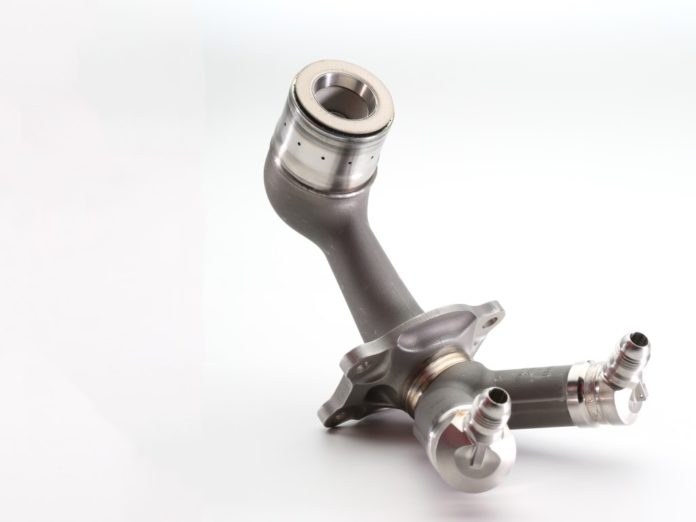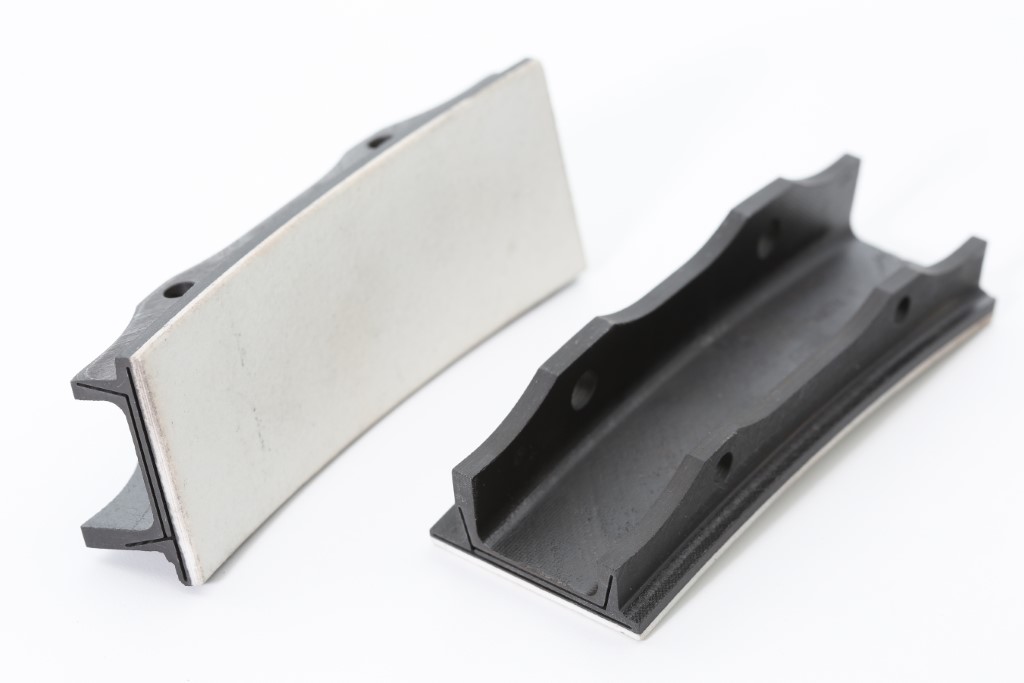
Two GE Aviation facilities reached a new milestone in July with one shipping the 100,000th Ceramic Matrix Composite (CMC) turbine shroud and the other the 100,000th additively manufactured fuel nozzle tip.
Those facilities are respectively the Asheville, North Carolina and the Auburn, Alabama, facility.
While the metal 3D printed fuel nozzle tip is the one that raises our interest the most here, it should be noted that both parts serve in the CFM LEAP engine, a product of CFM International, a 50/50 joint company between GE and Safran Aircraft Engines. The CFM LEAP engine is commercially available since 2016 and has already achieved more than 10 million flight hours earlier this year. The fleet is providing operators with 15% better fuel efficiency than previous generation engines. Each engine has 18 shrouds and 18 or 19 fuel nozzles, depending on the specific model.

“We’re proud to deliver our 100,000th CMC turbine shroud in support of the LEAP engine,” said Ed Orear, composites general manager for GE Aviation. “This milestone is a testament to GE Aviation’s commitment to produce the leading aviation materials technologies. This achievement could not have happened without the great production teams in Asheville and Huntsville, supported by GE’s incredible engineering teams at GE Aviation and GE Research.“
It took 6 years to the Auburn site to reach this milestone, ever since they started producing fuel nozzles. According to GE Aviation, this site remains the first mass manufacturing site when it comes to the fabrication of aircraft engine parts using AM.
With more than 27 GE Additive metal AM systems across its facilities in the US and in Europe, the aerospace company does not intend to stop here. It plans to explore other methods to mass produce parts with CMC materials and additive methods, then scaled the technology over time, while improving and maintaining production quality.
One of the first steps it already showed to improve production quality, has been seen earlier this year, when the engineering teams shifted production of four existing parts from investment casting to AM based strictly on cost.
While it is easy to understand AM’s potential for the future, let’s note that CMC from a manufacturing perspective remains an interesting option for some parts. This advanced material containing silicon carbide fibers is one-third the weight of traditional metal alloys with two times the temperature capability, enabling this way to improve engine thermal efficiency, and reduce fuel consumption and carbon emissions.
“We opened the industry’s first site for mass production using the additive manufacturing process, and to achieve this milestone affirms our plans and investments were on target,” said Eric Gatlin, additive general manager for GE Aviation. “There is a bright and exciting future for this technology.”
Remember, you can post job opportunities in the AM Industry on 3D ADEPT Media free of charge or look for a job via our job board. Make sure to follow us on our social networks and subscribe to our weekly newsletter : Facebook, Twitter, LinkedIn & Instagram ! If you want to be featured in the next issue of our digital magazine or if you hear a story that needs to be heard, make sure to send it to contact@3dadept.com





